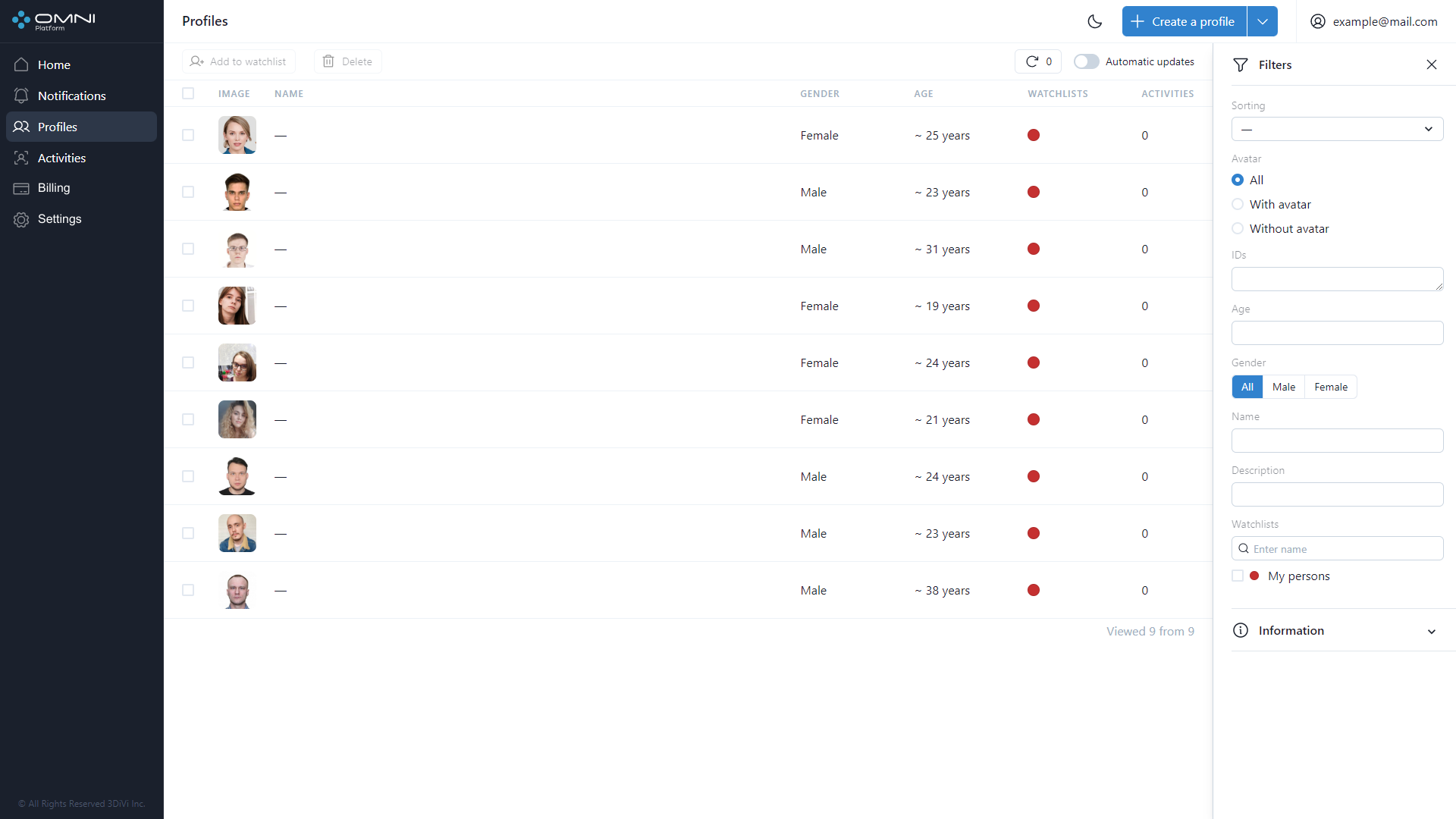Profiles
Profile is an object that contains metadata about a person, person's photo (avatar), activity and the main sample - a biometric template used for detection. The main sample is used by an agent to check for a profile in the database, and by a server - to determine a profile which the new activities should be attached to. In case the sample from the new activity has better quality than the current main sample, the main sample can be replaced by the system.
Create Profiles
The profiles are created in several ways:
- Manually
To create a profile manually, just upload a person's photo (avatar). The uploaded image will be used as the initial main sample. All the rest fields are optional to fill in.
- Automatically
When OMNI Agent creates the activity for a person detected for the first time and not included to the database, a profile for this person is auto-generated by the system. In this case, the system creates a partially filled profile, which contains the main sample, activity and such metadata as gender and age,determined automatically when creating the activity.
Create a Single Profile
To create a profile manually, do the following:
- Open Profiles page via Profiles sidebar item in web interface or using Profiles panel at home page. At appeared page click Create a Profile button.

Fill in profile data at the opened window. Here you need to upload a profile avatar, as the main sample, used for identification, is created based on this uploaded image. Avatar image should meet the following requirements:
- The image is of good quality, clear, without shadows, bright illumination and glare.
- The image contains only one face.
- The image is full-face.
- The face in the image is in a vertical position.
- We recommend that you do not upload images with a large face inclination angle.
- Facial expression is neutral.
- The eyes of the person in the image are open
- The image size is no more than 6MB.
- Image format is jpg, png, bmp.
- Image height and width do not exceed 4032 pixels
When avatar is uploaded, click Create button.

- As a result, a profile will be created in the database.
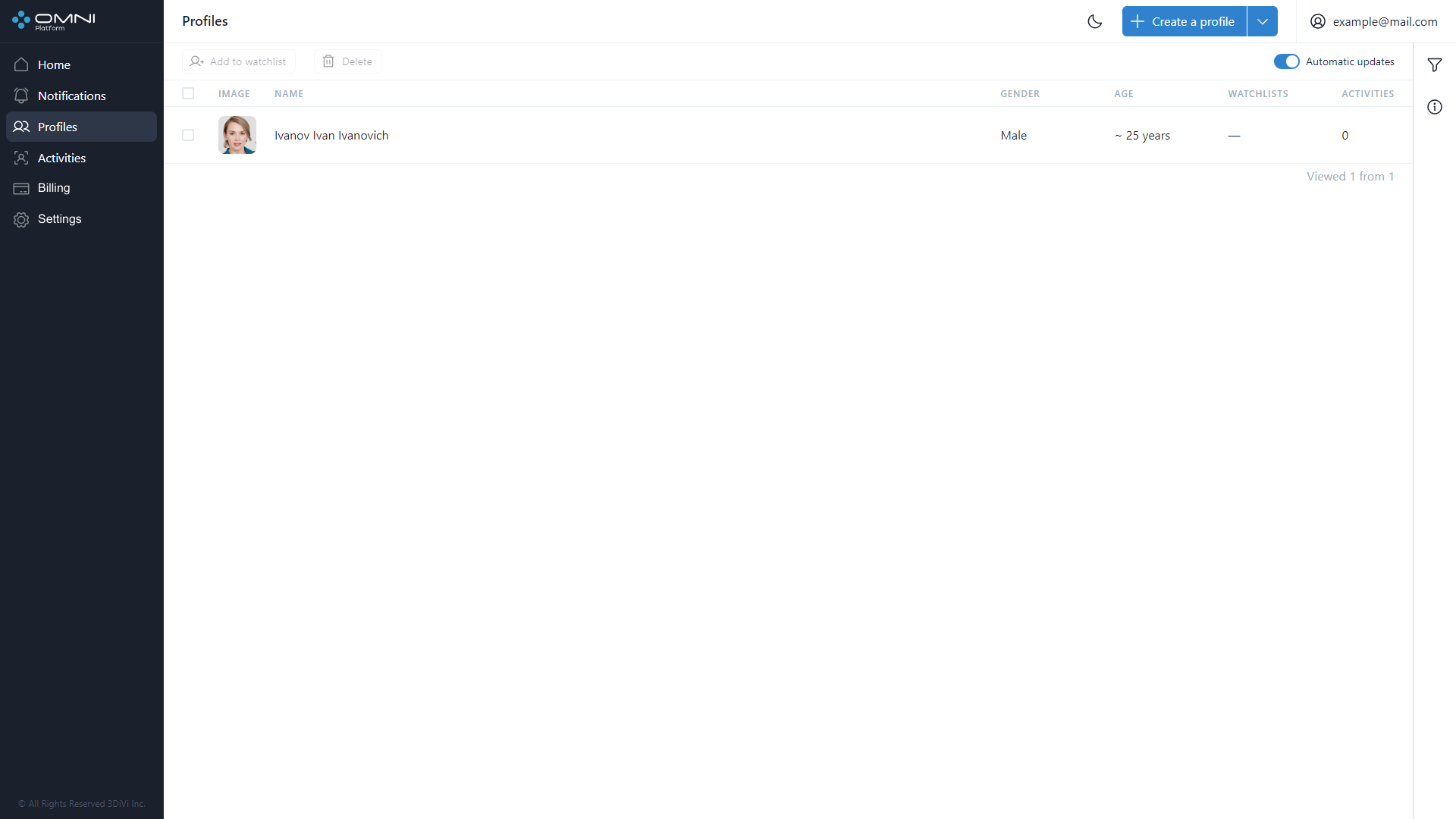
Create Multiple Profiles
To create up to 25 profiles at once, do the following:
- Open Profiles page via Profiles sidebar item in web interface or using Profiles panel at home page.
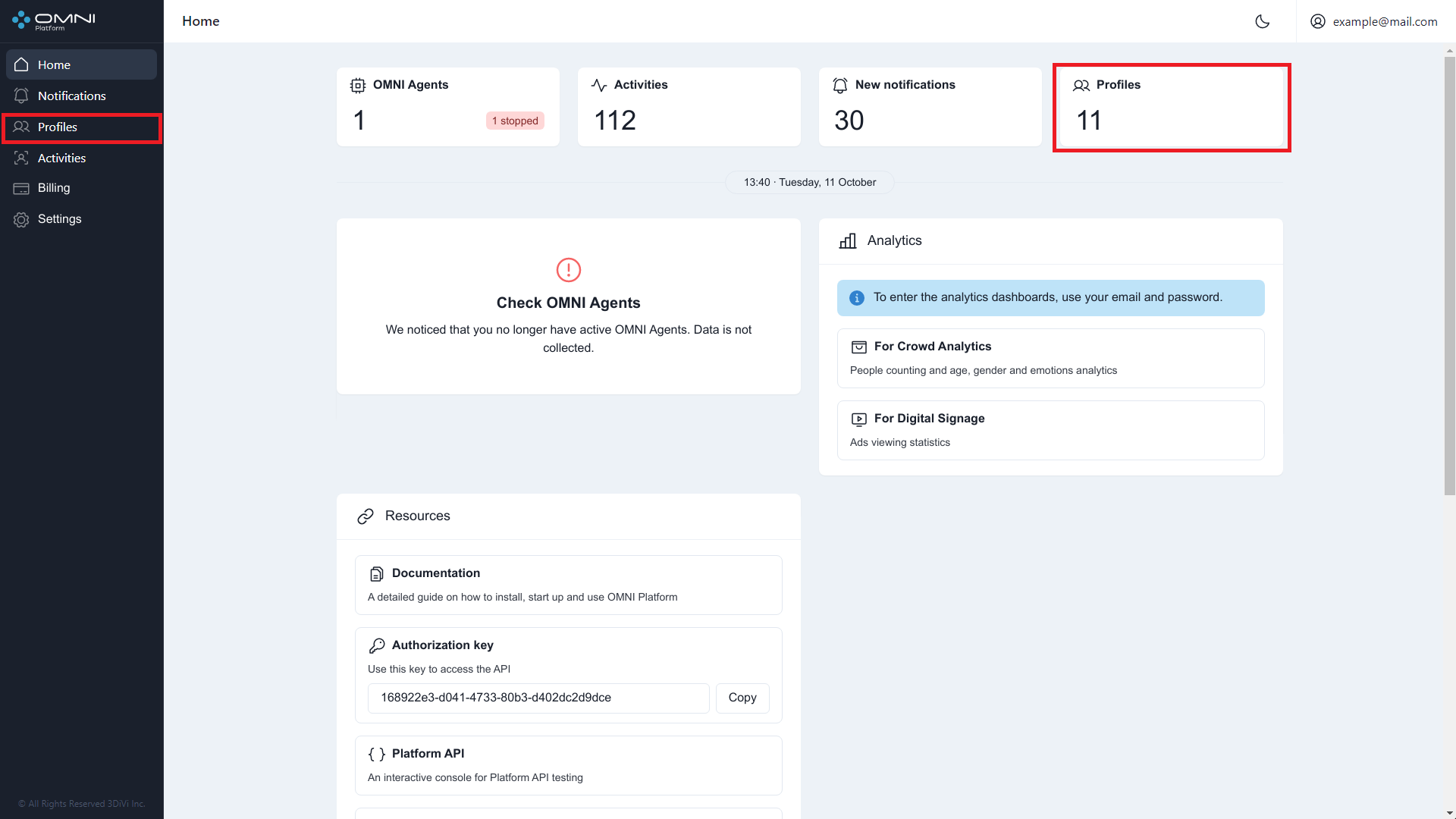
- At appeared page click Create multiple option of Create a Profile button.

- Drag-and-drop several images or select files via system file manager. The image requirements are the same as for creating a single profile.
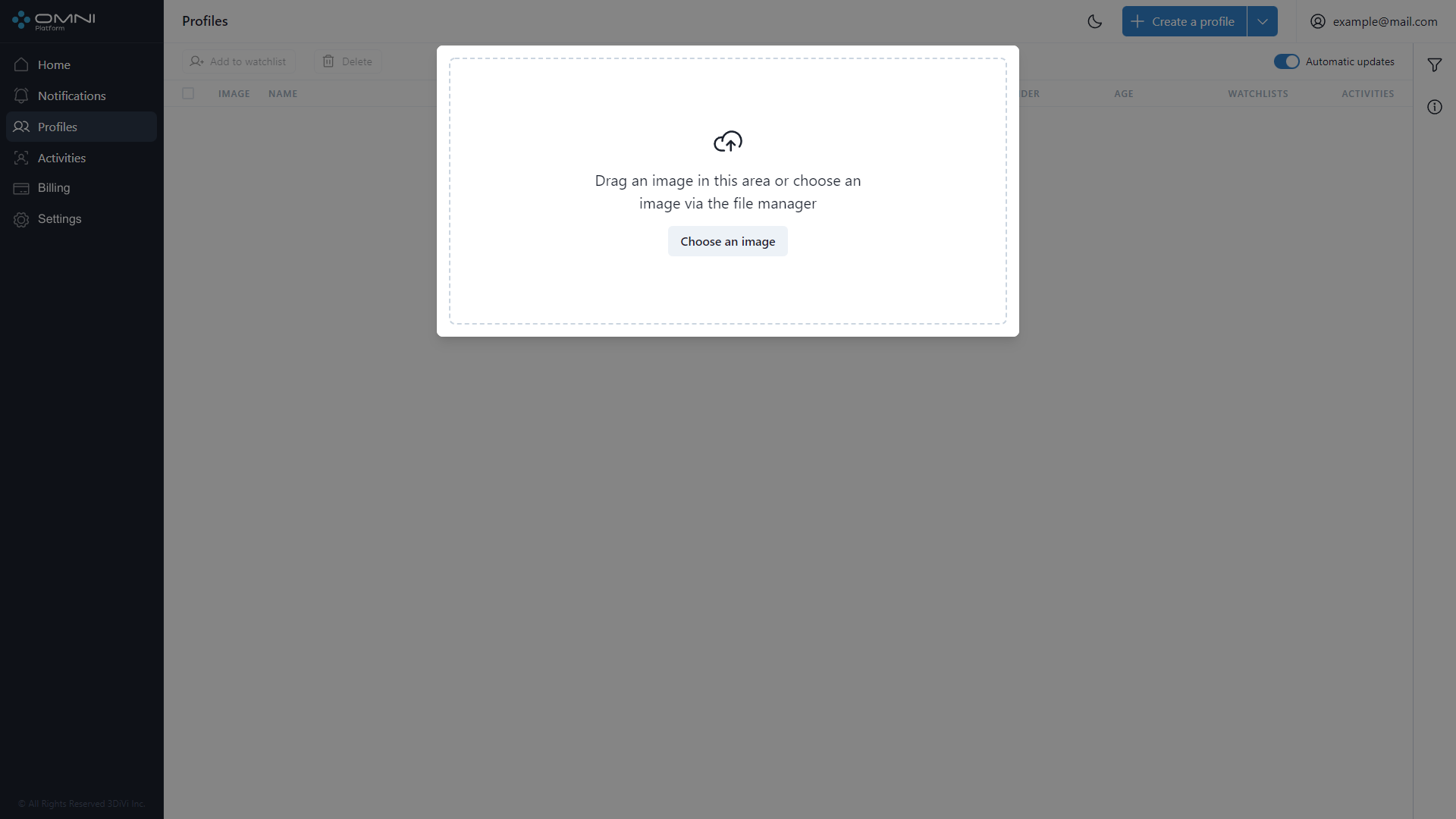
- As a result, profile creation will start. Note that profiles are created in several steps:
- The uploaded image is checked for the above-mentioned image requirements.
- The uploaded image is checked for duplication.
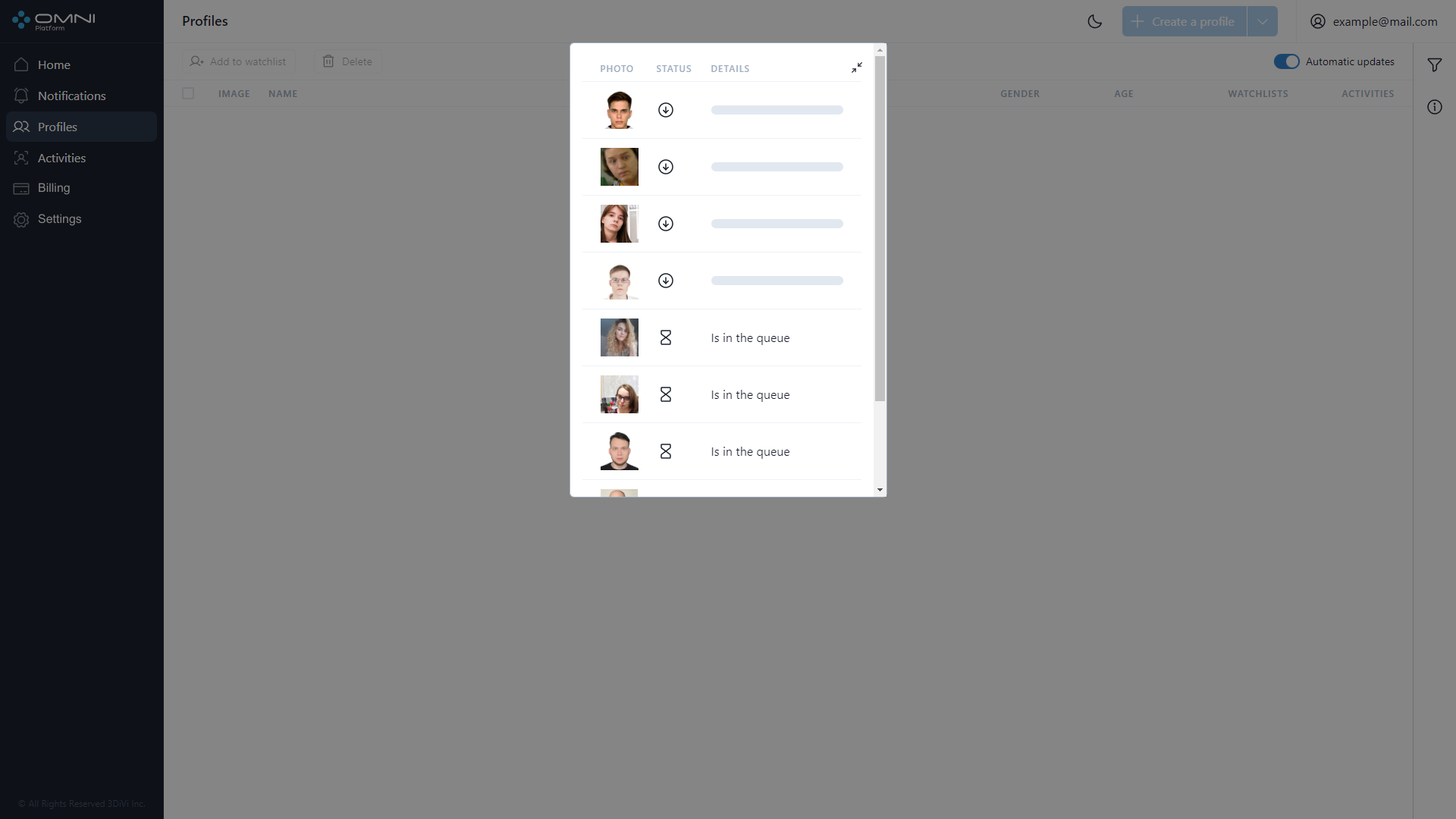
If the image passes a check, you'll see the message that a new profile is successfully created, otherwise the system will show error note.

View Profiles
To view profiles, do the following:
- Open Profiles page that displays a table with profiles created in the database.
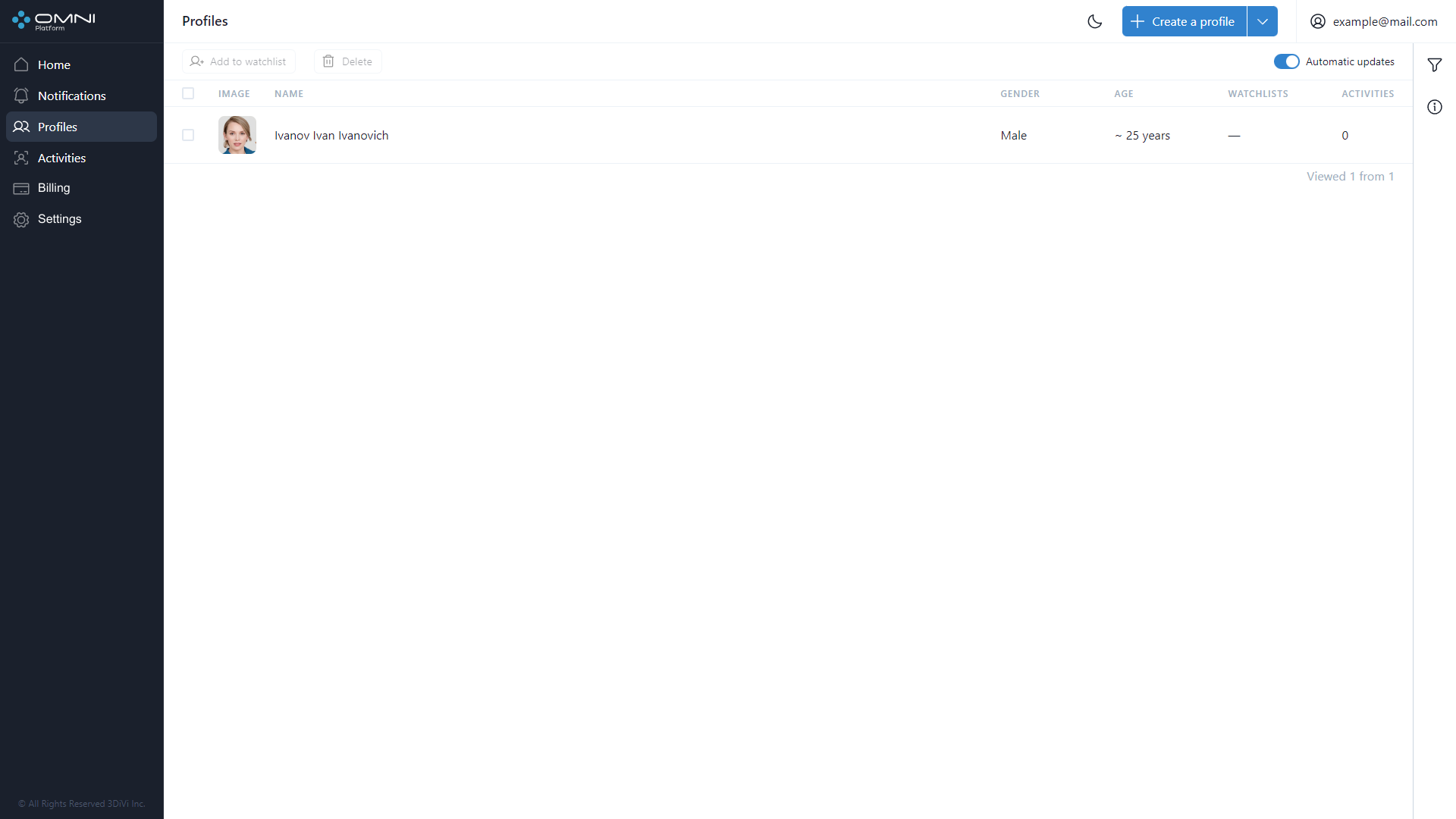
- To view detailed profile information, click the table line to open a profile card. The card contains profile description, watchlists the profile is added to, activities, creation date, last modification date and button with shortened profile ID. To see the full ID, just hover over this button. If you click it, ID will be copied to the clipboard.

Edit Profiles
To edit profiles, do the following:
- Open a profile card by clicking the table line:

- You can change the following fields in the card: avatar, name, gender, date of birth and description. Also, via the card you can add/remove a profile from the watchlist. To interact with watchlists, you can also use Watchlists section. After data is changed, click Save button. As a result, profile data will be changed.

Delete Profiles
To delete profiles, do the following:
- Open a profile card by clicking the table line and click Delete button at the top right side of the page.

- Click Delete in the delete confirmation message.

- As a result, the profile is deleted from the database.
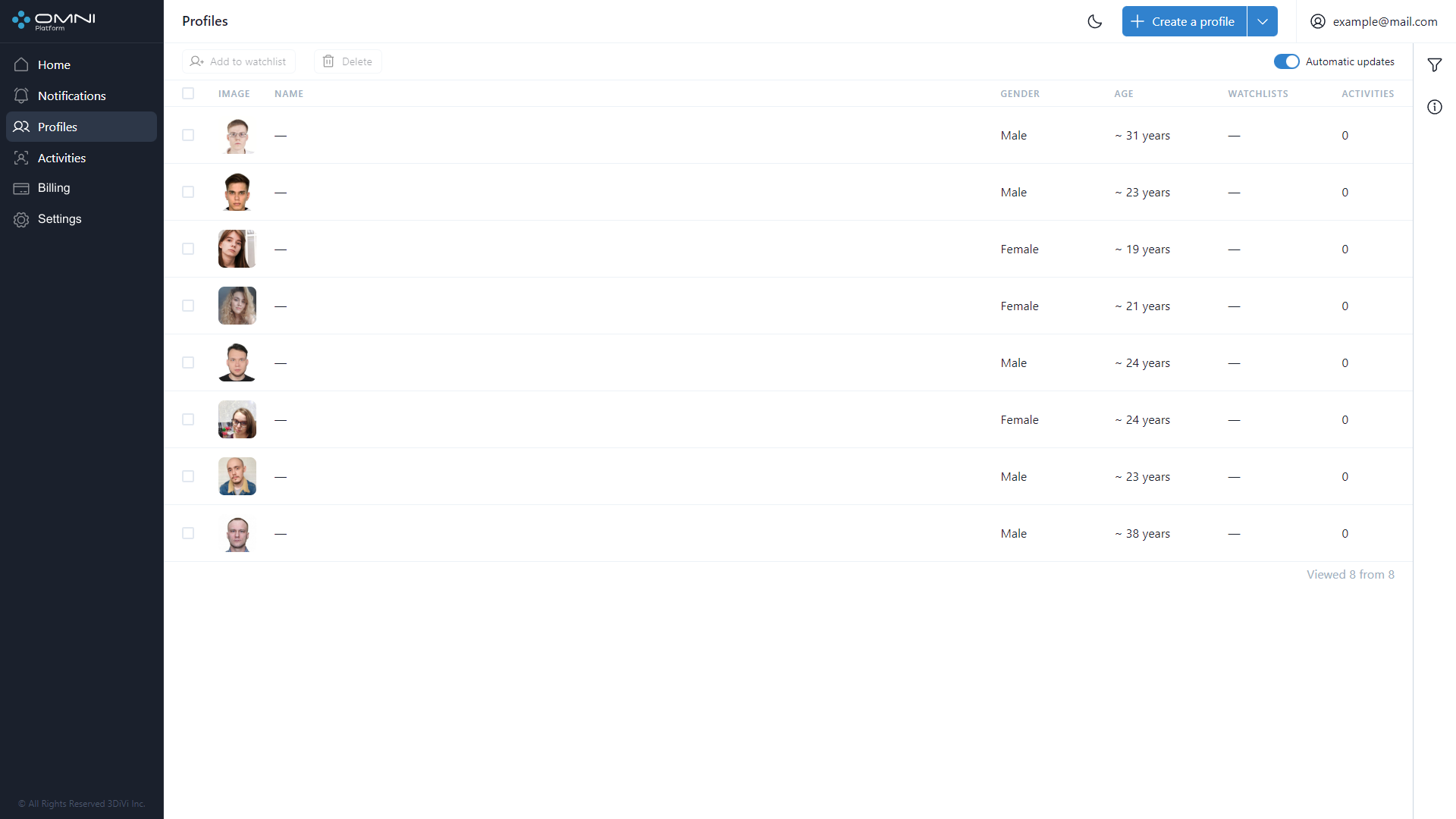
Automatic Update
When multiple OMNI Agents work simultaneously, new objects are created too often and hinder interactions with already existing ones. In this case you can disable automatic data update.
To disable automatic update, click a toggle button in the table header.
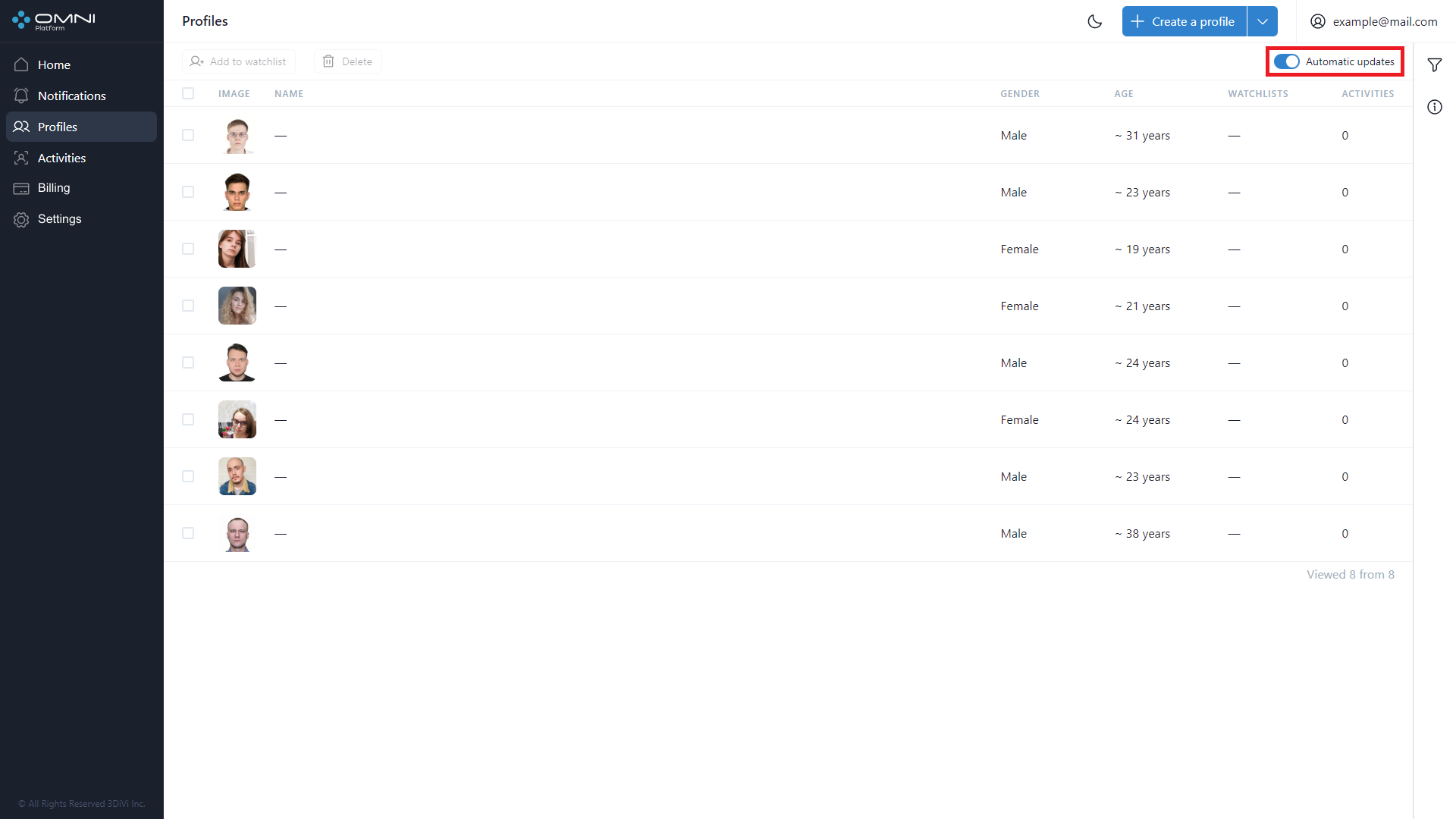
After automatic update is disabled, you'll see an icon with counter that displays a number of new profiles created from the time automatic update was stopped.

Click this icon and the system will upload all new data.
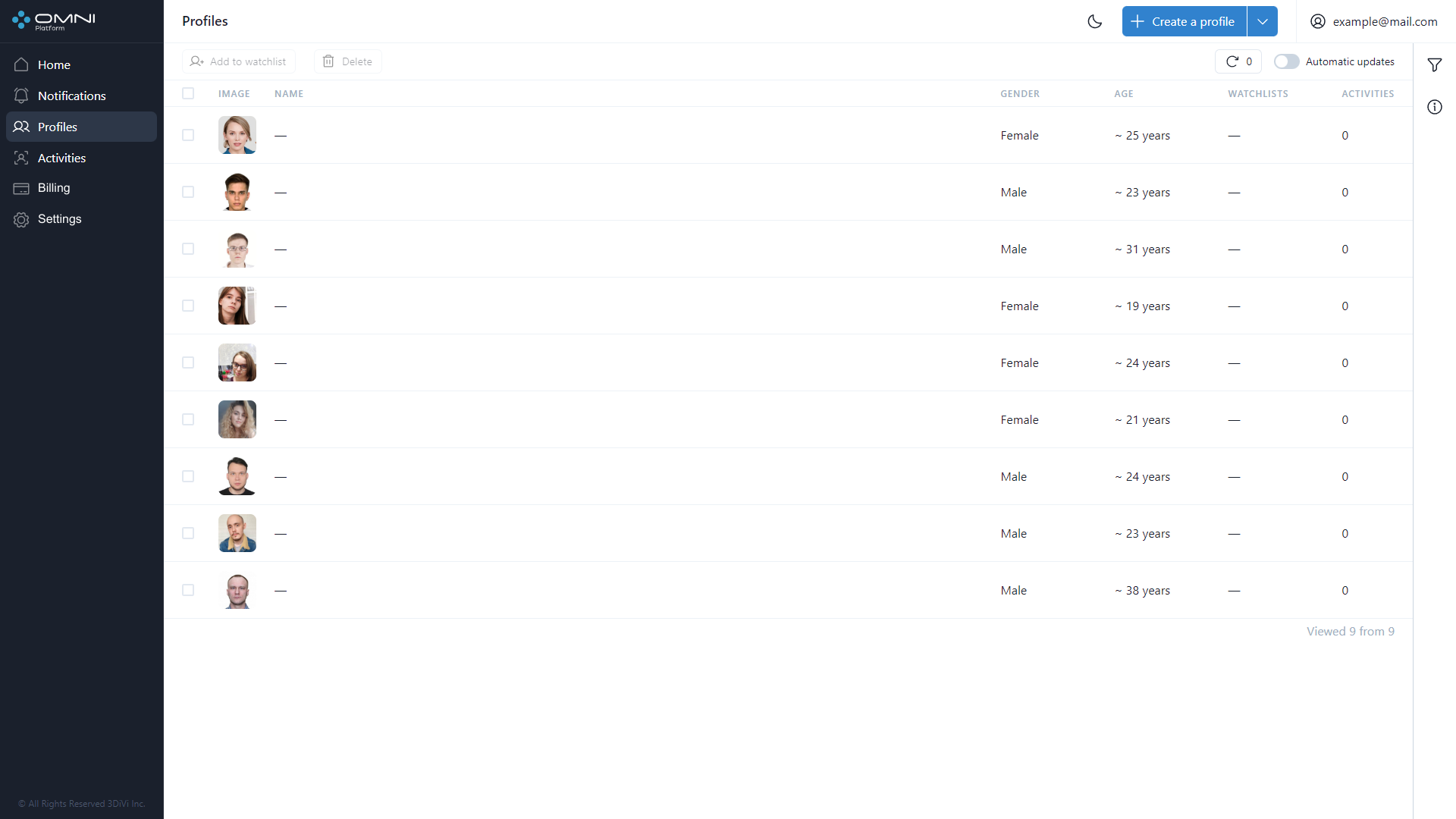
Automatic update can be enabled by clicking a toggle button or just by updating the page.
Add/Delete Multiple Profiles
The system contains the functionality to reduce routine operations with multiple profiles:
- Deleting multiple profiles from the database
- Adding multiple profiles to watchlists
To add/delete multiple profiles, do the following:
- At Profiles page choose profiles to add or delete. To choose all the profiles on the page, put a tick in a checkbox in the table header.

- Choose a watchlist where to add profiles to, and, as a result, all selected profiles will be added to this watchlist.
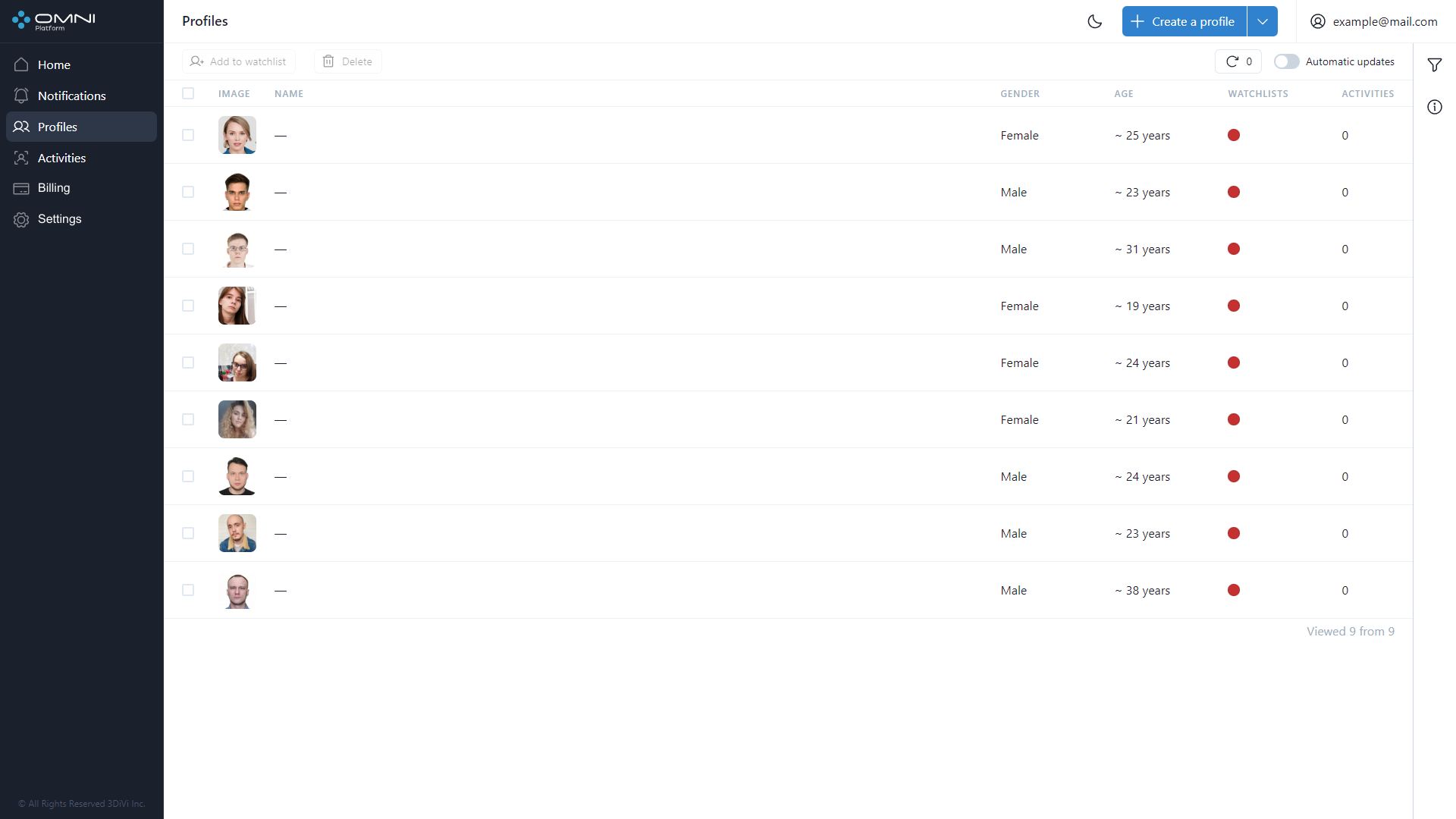
Deleting profiles from the database works the same. Note that when deleting several persons, the deleting process will start up without confirmation after you click Delete button.
Filtering and Sorting
The system contains a list of filters and sorting options. Profiles are filtered by the following parameters:
- Avatar presence
- Profile IDs
- Age
- Name
- Description
- Watchlists
- Gender
Sorting options are the following:
- Creation date
- Last modification date
- Name
- Age
- Gender
- Watchlist name
To configure filters, click Filtering icon at the top right side of web-interface under Account button.
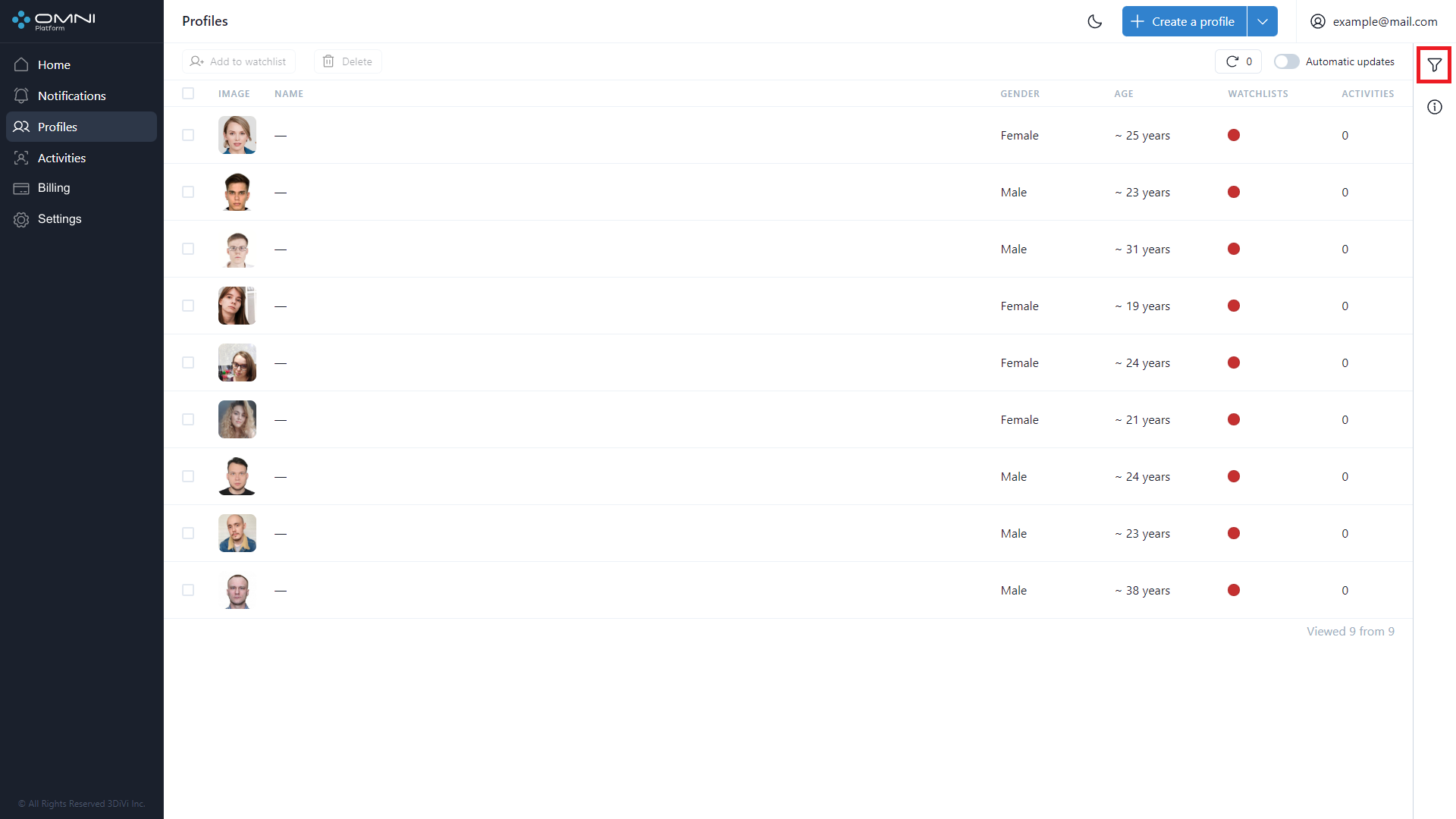
Fill in the appropriate fields in the opened tab. IDs can be copied from object cards.
